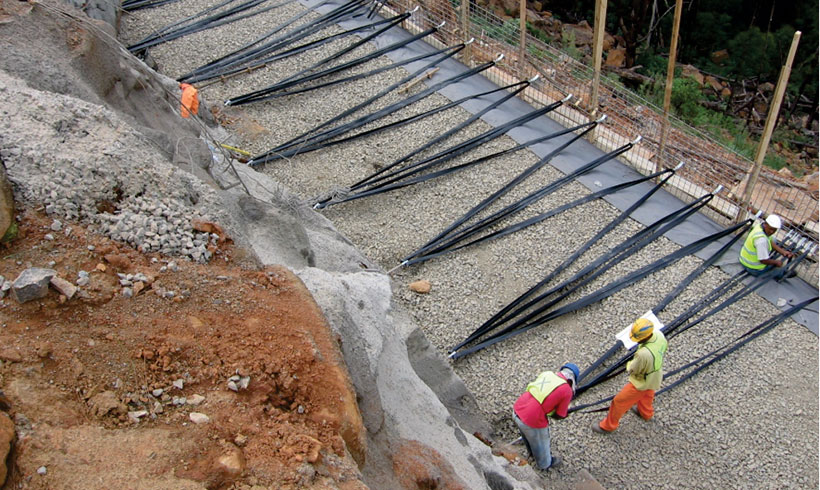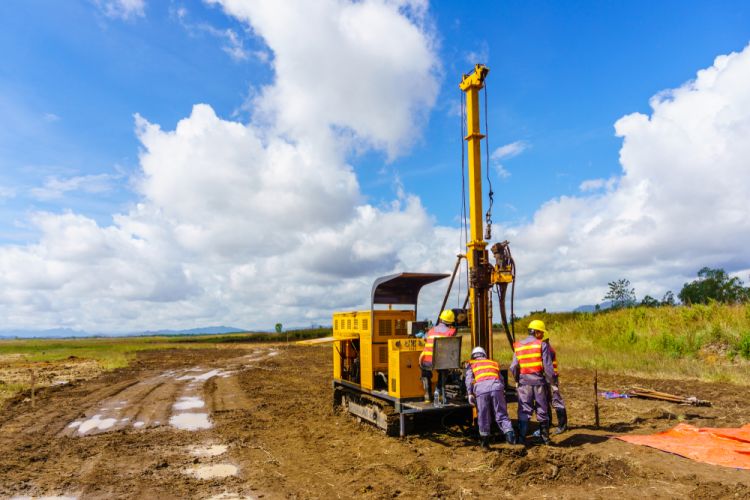Excitement About Geotechnical Engineering For Construction Projects
Excitement About Geotechnical Engineering For Construction Projects
Blog Article
Unknown Facts About Geotechnical Engineering For Construction Projects
Table of ContentsExcitement About Geotechnical Engineering For Construction ProjectsUnknown Facts About Geotechnical Engineering For Construction Projects8 Simple Techniques For Geotechnical Engineering For Construction ProjectsNot known Factual Statements About Geotechnical Engineering For Construction Projects The Buzz on Geotechnical Engineering For Construction Projects7 Simple Techniques For Geotechnical Engineering For Construction Projects10 Simple Techniques For Geotechnical Engineering For Construction Projects
and Kovacs, W. (1981 ), An Intro to Geotechnical Engineering, Prentice-Hall, Inc. Deep Check Technology (2023 ): Deep Scan Technology discovers surprise structures at the site of Denmark's tallest structure. "Geofrost Coring". GEOFROST. Fetched 20 November 2020. Han, Jie (2015 ). Principles and Practice of Ground Enhancement. Wiley. ISBN 9781118421307. RAJU, V. R.Ground Improvement Technologies and Situation Histories. Singapore: Study Posting Services. p. 809. ISBN978-981-08-3124-0. Ground Renovation Concepts And Applications In Asia. Pariseau, William G. (2011 ). Design analysis in rock mechanics. CRC Press. Hegde, A.M. and Palsule P (Geotechnical Engineering for Construction Projects).S. (2020 ), Performance of Geosynthetics Reinforced Subgrade Subjected to Repeated Lorry Loads: Experimental and Mathematical Research Studies.
Cengage Learning, Stamford, 666 p. Atkinson, J., 2007. The mechanics of soils and structures. The Observational Method in ground design concepts and applications.
Getting The Geotechnical Engineering For Construction Projects To Work
Lab and field testing plays a critical function in this process. By removing samples from the planet's subsurface and using a suite of examinations, geotechnical engineers can anticipate the behavior of soil layers and examine their suitability for numerous building and construction efforts. The significance of geotechnical design in civil design can not be overemphasized, attributable to a number of factors: The first action in any kind of geotechnical research study includes figuring out the dirt kind at the building and construction site.
Recognizing these characteristics ensures that just suitable soil types are chosen for the growth, thus avoiding prospective architectural failings. The foundation functions as the bedrock of any building and construction project. Picking the proper foundation type is a choice that hinges on the extensive analysis provided by geotechnical engineering. This makes sure the long life and security of frameworks by accommodating the tons they will certainly birth.

Geotechnical site examination is a critical action in the planning and implementation of any building and construction project. It includes the collection and evaluation of information related to the physical homes of dirt and rock beneath a proposed building website. This details is important for the style and building of risk-free, stable, and sustainable structures.
The Best Strategy To Use For Geotechnical Engineering For Construction Projects
, also understood as subsurface expedition, includes a series of tasks aimed at figuring out the soil, rock, and groundwater conditions at a building website. The main purposes are to determine prospective geotechnical dangers, evaluate the design properties of subsurface materials, and offer suggestions for the layout and construction of foundations, preserving walls, and other frameworks.
The workdesk research aids in recognizing potential geotechnical issues and planning the subsequent fieldwork. This involves observing the topography, drain patterns, existing structures, plant life, and any indications of instability or disintegration.
Geotechnical Engineering For Construction Projects Can Be Fun For Anyone
Shallow test pits are dug deep into to straight observe and sample the soil and rock. This approach serves for examining the top layers of the subsurface and determining near-surface dangers. Non-invasive geophysical methods, such as seismic refraction, ground-penetrating radar (GPR), and electric resistivity tomography (ERT), are utilized to map subsurface problems and discover anomalies.
Dirt and rock samples accumulated throughout the field examination are subjected to lab screening to establish their physical and mechanical residential properties. These examinations supply vital information for geotechnical analysis and style.
The main advantage of geotechnical website investigation is guaranteeing the safety and security and stability of structures. By understanding the subsurface conditions, engineers can design foundations and other structural elements that can withstand the loads and environmental pressures they will certainly undergo. This reduces the danger of negotiation, decrease, and architectural failure.
Some Known Questions About Geotechnical Engineering For Construction Projects.
Recognizing soil features can guide the selection of excavation methods, dewatering approaches, and ground renovation steps. This ensures reliable and secure construction practices. Geotechnical site examinations are usually required by constructing codes and policies. Complying with these demands makes certain compliance with legal and security standards, staying clear of prospective legal responsibilities and project delays.
This info is important for job supervisors, designers, and professionals in developing practical routines, budget plans, and contingency strategies. Geotechnical Engineering for Construction Projects. Skyscraper Building in a Coastal AreaIn a coastal city, a skyscraper domestic structure was intended on a site with suspected loosened sand deposits and a high water table. A detailed geotechnical examination, consisting of borehole exploration, CPT, and geophysical studies, was carried out
Not known Details About Geotechnical Engineering For Construction Projects
Based on these findings, the structure style was customized to include deep pile structures expanding into secure strata, and ground enhancement techniques, such as vibro-compaction, were executed to reduce liquefaction dangers. This aggressive technique made certain the safety and security of the building while staying clear of pricey post-construction removal. Facilities Development on a Sloping TerrainA major infrastructure project, involving the building of a freeway and bridges, was prepared on an uneven surface with steep inclines.

The Leaning Tower of Pisa (Italy), a Read More Here legendary architectural wonder, is well known for its unexpected tilt from considerable geotechnical issues. The tower's structure was inadequately developed to handle the soft, unpredictable dirt underneath it, leading to uneven settlement and its unique lean. Our world is populated with impressive framework projectsfrom looming high-rises to sprawling bridgesall standing statement to the evolution of the different building equipment and techniques readily available.
Geotechnical design is a specific field within civil engineering that concentrates on studying the actions of earth materials. This branch dives deep into the groundinvestigating just how the soil, rock, and groundwater at a building site can influenceand be influenced bythe framework that we set up on and right into them. Before a single block is laid or a concrete foundation put, geotechnical engineers probe into the earthgathering crucial data regarding the site's dirt make-up, rock structure, and groundwater levels.
6 Easy Facts About Geotechnical Engineering For Construction Projects Described

is a device used to examine the integrity and load-bearing capacity of piles during installation, leveraging the concept of wave proliferation. It maximizes building and construction performance by providing real-time assessments, therefore guaranteeing risk-free and efficient stack foundations. One of the useful applications of geotechnical engineering involves deciding and executing the appropriate techniques for foundation construction.
Stack driving stands for even more than the plain act of putting architectural components right into the ground. On the contrary, it is a carefully orchestrated procedure of transferring a structure's lots past the less secure soil layers more detailed to the surfacedown to the much more significant strata that exist under. official site In the instance of heap driving, think about just how geotechnical engineers skillfully utilize this method to evenly disperse the framework's weight.
Report this page